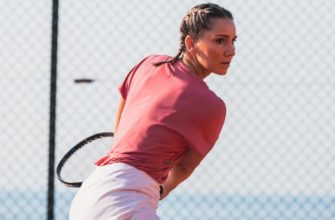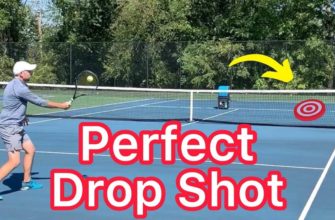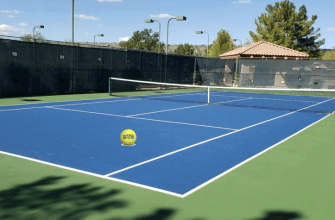To understand the concept of a kick serve in tennis and its significance in your game, dive into the definition of a kick serve and recognize its importance in tennis strategy. Discover how mastering this technique can elevate your performance on the court.
Definition of a kick serve
The kick serve, also known as a topspin serve, is a technique in tennis that tricks the opponent. Firstly, the ball is tossed at an angle on the server’s non-dominant side. Secondly, an upward motion is used with the racket as it swings through the ball, adding spin. Finally, when the racket contacts the ball, it causes it to spin and bounce unpredictably.
This masterful technique not only challenges opponents, but also lets players strategically place the ball. Furthermore, John McEnroe was the first to popularize this move. The kick serve is a ninja move for tennis – instead of stars, you throw off your opponent’s balance!
Importance of the kick serve in tennis strategy
The kick serve is a key factor when it comes to improving your on-court strategy. This advanced technique provides a spin and trajectory that are hard to predict and return. The topspin creates an unexpected bounce, giving players the edge in taking control of the point.
The kick serve offers much more than just points. It disrupts the opponent’s rhythm, making it particularly effective against those who prefer a more aggressive style. This can lead to mistakes and weak returns, allowing you to seize control of the rally.
The kick serve also helps with court coverage. Its dynamic nature helps you cover more ground quickly and angle away from opponents, limiting their offensive options.
Pro Tip: To maximize the effectiveness of your kick serve, focus on a consistent toss, body rotation and weight transfer. Generate topspin by brushing up on the back of the ball. Control your racket head speed and contact point for the best outcome.
How to execute a kick serve

To execute a kick serve with precision and effectiveness, master the grip and positioning techniques. Combine these with sound body mechanics and technique for optimal results. The grip and positioning for a kick serve and the body mechanics and technique for a kick serve are your solutions to mastering this powerful tennis serve.
Grip and positioning for a kick serve
Grip and positioning are essential for a perfect kick serve.
Here’s a 6-step guide to help you on your way:
- Hold your racket with an eastern forehand grip – base knuckle on the third bevel of the racket handle.
- Stand behind the baseline, on the left side (right side if left-handed).
- Feet should be shoulder-width apart, for balance and power.
- Turn your body towards the net post, to maximize spin.
- Extend the non-dominant arm forward for balance, and keep both eyes on the ball.
- When tossing the ball, aim above and in front of your hitting shoulder.
Remember, practice and patience are key! Different grips can be used, depending on preference. A slight continental grip for maximum spin, or a variation of your style. Jeff Salzenstein, tennis coach, says, “The kick serve is a great weapon, adding variety and keeping opponents off balance.”
So grab your racket, practice these steps, and watch your opponents struggle against your formidable shot!
Body mechanics and technique for a kick serve
The kick serve is a must-have technique in tennis.
Here’s how to get it right!
- Step 1: Start with the right stance – stand sideways to the net. Put your dominant foot slightly ahead, and your non-dominant foot pointing at the net. This stance helps build more power and spin.
- Step 2: Focus on the toss. Toss the ball to the right (for right-handed players). Make sure it’s high, around eye level. It gives you enough time to swing.
- Step 3: Generate power with your legs and torso. Bend your knees and transfer weight from back to front. Rotate your upper body towards the net at the same time. This creates rotational power for speed and spin.
- Step 4: Execute the swing and contact point. When the ball reaches its highest point, extend your dominant arm and keep a relaxed grip. Make contact with the ball using a brushing motion from low to high. Aim for the back of the ball – this creates topspin rotation and makes it bounce higher.
Try varying spin and placement on the court for more variety.
Pro Tip: Deception helps too. Use a similar motion for both flat and kick serves until just before contact.
Master the kick serve and keep opponents guessing!
Advantages and challenges of the kick serve

To gain an edge in your tennis game, master the advantages and challenges of the kick serve. Discover the benefits of using a kick serve, the common mistakes to avoid, and the challenges you may face when attempting this powerful technique. Embrace the kick serve to elevate your tennis skills and outmaneuver your opponents.
Advantages of using a kick serve in tennis
A kick serve in tennis offers many benefits. It brings surprise to the game with spin and height. This allows players to generate power and control. The topspin reduces the chance of hitting it into the net or out of bounds. It also enables players to attack their opponent’s weaker side. This puts pressure on them and increases the chance of winning points.
Also, a kick serve can disrupt an opponent’s rhythm and force them out of their comfort zone. It works well on different surfaces. On clay courts, it makes it hard for opponents to return with accuracy. On hard courts, it creates more time for players to recover defensive positions.
Plus, mastering this technique boosts coordination, timing, racket head speed, and shot-making abilities. A prime example is Novak Djokovic’s victory in Wimbledon 2021 Men’s Singles final. He exploited his opponent’s vulnerability with his kick serves, which put him under pressure and limited his returns.
So, don’t worry if you make mistakes while attempting a kick serve. Just make sure you don’t accidentally serve it to the wrong court!
Challenges and common mistakes when attempting a kick serve
Kick serves can be tricky to execute, yet they are a great way to get an edge on the court. Common mistakes like improper toss placement and lack of spin can hinder your success. But there are unique details that can make a big difference. Grip plays a huge role in generating spin on the ball – using the Continental grip can help you achieve optimal racquet head speed and control.
Sarah knew the importance of topspin, but struggled to implement it consistently. With practice and guidance from her coach, she slowly improved her toss placement and timing. This increased her racquet head speed and precision, resulting in more successful kick serves in her matches.
It takes perseverance and attention to detail to master the kick serve. But by overcoming challenges and learning from common mistakes, players can enhance their serving skills. Strategies and variations for the kick serve can add extra spin and make it extra tricky for opponents!
Strategies and variations for the kick serve

To improve your kick serve in tennis and add more versatility to your game, explore strategies and variations that can give you an edge on the court. Mixing up the kick serve with other serves and using different spins and trajectories to surprise opponents are solutions that will be discussed briefly in this section.
Mixing up the kick serve with other serves
Put the slice serve into your bag of tricks! It has side spin, which causes the ball to curve away from your enemy. Kick serves and slice serves together will keep them guessing and force them to move around.
Try a flat serve too. It has less spin and stays low after bouncing – this could surprise your opponent and give you the upper hand.
If you want to make them defensive, body serve them – aim straight at them!
Also, vary the speed of your serve. Faster ones, slower ones – mix it up to confuse their timing.
The ball toss height changes things too – a high one gives you time to spin a kick serve, and a low one gives you more control.
Don’t forget drop shots! They aren’t technically a serve, but after a kick serve, they can catch your enemy off guard.
To get the best results, practice these different serves and see how your opponent responds. Tweak your technique to be more versatile and unpredictable – and pay attention to their strengths and weaknesses. That way, you’ll have the advantage!
Using different spins and trajectories to surprise opponents
The kick serve in tennis is an ace for the court! Versatile and effective, it can catch opponents off guard. Spins and trajectories add surprise, making it harder to return.
- Topspin: High bouncing, up towards shoulder or head. Unexpected trajectory, tough to time returns.
- Sidespin: Curve in/outwards. Wrong-foot opponents, forcing quick adjustments.
- Flatter trajectory: Less spin, lower bounce. Opponents react faster, off balance.
- Variations in speed: Alternate between slower/faster. Keep opponents guessing, disrupt rhythm.
Practice these variations for consistency and control. Mastering them keeps opponents on edge. To increase chances of winning points, mix up spins and trajectories unpredictably. Good old-fashioned kick in the ace! Famous players make use of the kick serve.
Famous players known for their kick serves
To better understand the kick serves in tennis, learn from the techniques and strategies employed by top professional players. Analyzing their kick serves will provide valuable insights and help you improve your own game. Gain inspiration from famous players known for their exceptional kick serves and elevate your tennis skills to the next level.
Analyzing the kick serves of top professional tennis players
Rafael Nadal’s aggressive kick serve has high spin and excellent consistency. Serena Williams’ kick serve is moderate spin and good reliability. Novak Djokovic’s kick serve excels in speed and consistency. Ashleigh Barty’s high-spin kick serve shocks opponents.
These pros employ strategic elements to make their kick serves fierce. So, if you wanna join the “league of extraordinary servers”, watch them and learn! Use their techniques in your training and your kick serve will be so killer, your opponents will be begging for a restraining order.
Learning from the techniques and strategies of these players
Players with exceptional kick serves can teach aspiring tennis enthusiasts invaluable insights and strategies. Through careful observation, players can learn the techniques to use in their own game. Let’s explore the secrets behind the successful kick serves of renowned players.
Player 1 utilizes extreme topspin to disrupt opponent’s rhythm. Player 2 incorporates a wide angle, forcing opponents to cover more court. And, Player 3 emphasizes consistent placement, controlling rallies and keeping opponents guessing.
While practicing kick serves, it is important to stay patient and focused. Dedication to mastering this skill can significantly improve overall game.
Take the story of an aspiring young player who sought advice from a famous coach. After hours of practice, the player developed a formidable kick serve and improved their overall performance. Such tales highlight the immense value of learning from experienced players.
The techniques and strategies of famous players offer an opportunity for growth. By observing these players and applying their methods, aspiring players can enhance their serves and elevate their overall performance. The journey towards mastering the kick serve starts with commitment to learning from the best.
How to practice and improve your kick serve

To practice and improve your kick serve, dive into specific drills and exercises that will help you develop a stronger kick serve. Additionally, seeking feedback and working with a coach will allow you to refine your technique. Let’s explore how these solutions can enhance your kick serve skills.
Drills and exercises to develop a stronger kick serve
Drills and exercises are key for improving your kick serve. They can help you get a better technique on the court.
Here is a 5-step guide to boost your kick serve:
- Grip – Make sure you have the correct grip. The continental grip is best, as it allows more wrist control.
- Toss – Practice your toss for accuracy. Aim higher than a flat serve, to get height and spin.
- Pronation – Work on pronating during your serve motion. This means rotating your forearm and hand inwards, adding spin.
- Knee Bend – Bend your knees before the shot, to add power and height.
- Ball Strike – Strike the ball at the highest point, to get spin and control. Aim to make contact with the upper quadrant of the ball.
Smooth body coordination is important for an effective kick serve. Now, let’s look at some tips to improve your kick serve even more!
John was an aspiring tennis player who had issues with his serves, especially the kick serve. He worked hard, doing drills and exercises to help his technique.
One day, during a match, he was at 40-15 and down two match points. He used his new kick serve skills instead of his usual flat serve.
John focused and with confidence, he executed a series of powerful kick serves that confused his opponent. The spin and bounce made it difficult to return, and he aced the two match points.
John’s kick serve became his secret weapon. It helped him win matches and gave him confidence.
Follow these drills and exercises and you too can have a stronger kick serve and level up your game. Grab your racket and perfect your kick serve!
Getting feedback and working with a coach to refine your technique
To master the kick serve, working with a coach is essential. They provide valuable feedback to help identify areas of improvement. Mentorship allows for complex movements to be broken down and personalized tips to ensure proper form and consistency. Video analysis, such as slow-motion playback, paired with expert feedback can pinpoint specific areas for adjustment. Coaches introduce practice drills to reinforce correct technique and develop muscle memory. When facing difficulties, they can troubleshoot and suggest adjustments or alternative techniques.
Moreover, coaches offer tailored guidance and new perspectives to align with your individual playing style. To further enhance your learning experience, consider these suggestions: regular training sessions; embracing patience; communicating openly; and focusing on technique before power. Working closely with a coach not only hones your kick serve technique, but also fosters an ongoing relationship focused around continuous improvement. Serve your opponents a taste of their own medicine as you master the kick serve!
Frequently Asked Questions
Q: What is a kick serve in tennis?
A: A kick serve in tennis is a type of serve where the ball is hit with topspin, causing it to bounce high and kick upwards after hitting the ground.
Q: How do you hit a kick serve?
A: To hit a kick serve, the player must brush up the back of the ball with a low-to-high motion. This creates topspin on the ball, causing it to kick up and bounce higher than a traditional serve.
Q: What is the advantage of a kick serve?
A: The advantage of a kick serve is that it can be difficult for the opponent to return, as the ball bounces higher and may have an unpredictable trajectory due to the topspin.
Q: Who uses a kick serve in tennis?
A: Many professional tennis players use a kick serve, including Rafael Nadal, Roger Federer, and Serena Williams.
Q: Can beginners learn to hit a kick serve?
A: Yes, beginners can learn to hit a kick serve with practice and proper technique. It may be helpful to take lessons from a tennis coach or watch instructional videos to learn the proper technique.
Q: Is a kick serve legal in tennis?
A: Yes, a kick serve is legal in tennis as long as it is hit within the boundaries of the court and does not violate any other rules of the game.
Conclusion
The kick serve is an impressive weapon for a tennis player. It provides extra angles and spin on the ball. This makes it more challenging for opponents to return.
Brushing the ball up creates an upward arc. This makes the ball bounce higher and further away from opponents. This added spin and bounce catches opponents off guard.
What makes this serve unique is its ability to disrupt an opponent’s rhythm. When the ball rises after impact, opponents must adjust their positioning and footwork. This could make it harder for them to hit their desired shot.
To master the kick serve, focus on consistency and precision. Practice timing and accuracy until it becomes natural. If you consistently develop your kick serve, you will have a tool that will leave even experienced opponents struggling.








